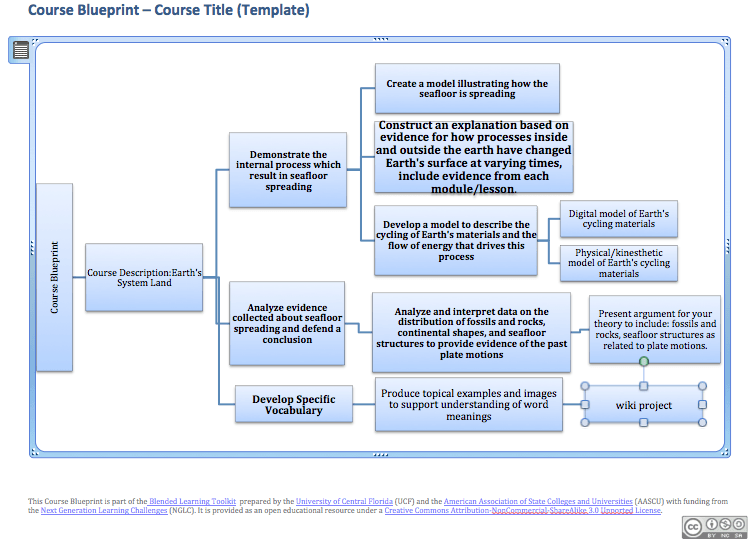
Looks like it is time for a new MOOC. I am starting #BlendKit2014 offered through Canvas Network by University of Central Florida and Educause. I have finished the last two MOOCs I have started and am optimistic about this 6 week course as well.
Accompanying this first reading and assignment was a very nice piece about what to blog about and how to frame the response so that you complete posts, but are ready for the imperfection and evolving nature of such fluid considerations a course is likely to provoke.
Reading: An interesting question put forth in the reading: “Is it most helpful to think of blended learning as an online enhancement to a face-to-face learning environment, a face-to-face enhancement to an online learning environment, or as something else entirely?” I have noted that some face-to-face instructors have encountered difficulty in transitioning their learning experience into a blended or online experience because of the vast investment in their current learning environment, since Kindergarten if it didn’t happen at school it didn’t count. However, those who were not as successful in the traditional learning experience have been more open to new ways of counting that learning that does not happen under the close visual supervision of a fluorescent-lit classroom.
I have found “ The Sloan Consortium ... defines blended learning as a course where 30%-70% of the instruction is delivered online” a most useful benchmark for for a couple of reasons. First, it illustrates how wide the different implementations can be – 30 to 70% allows for great variety. Second, even though the vastness of the portion of the course is delivered online this helps some educators to know they are within some guideline.
“How can the practicing teacher avoid blended learning pitfalls? McGee and Reis (2012) suggest that the answer may lie in the design process: “There is clear consensus that the best strategies for design begins [sic] by clearly defining course objectives before coming up with course activities, assignments and assessments. Course objectives are particularly critical for blended courses because objectives can inform content delivery mechanism (in class or online), pedagogy (bridging between the classroom and online activities), and requisite amount and locations for class meetings and interactions” (p. 11).” I do not want the current “traditional” teacher to see this as a secondary process. It is important to recognize the commonalities between face-to-face and blended/online instruction and also acknowledge the lack of continuity in vocabulary between these two worlds. The mention of the backward design theory of starting with the assessment, is fleeting mention in this quote.
An interesting question put forth at the start of this article: “As you consider designing a blended learning course, what course components are you open to implementing differently than you have in the past? How will you decide which components will occur online and which will take place face-to-face? How will you manage the relationship between these two modalities?” I call these the “non-negotiables” when I speak with teachers only accustomed to face-to-face instruction. I ask them what are you NOT willing to abandon to the online environment. This is often a better way for them to start feeling comfortable with their role as a controller of the learning environment and their role in the structure of that environment. This often centers around critical discussions that the teacher thinks are important be teacher-faciliated. Sometimes these stay in the face-to-face arena and sometimes the instructors negotiates structures to enhance and amplify these in an online environment.
Learning Activities:
Course Blueprint:

Mix Map







1 Pingback